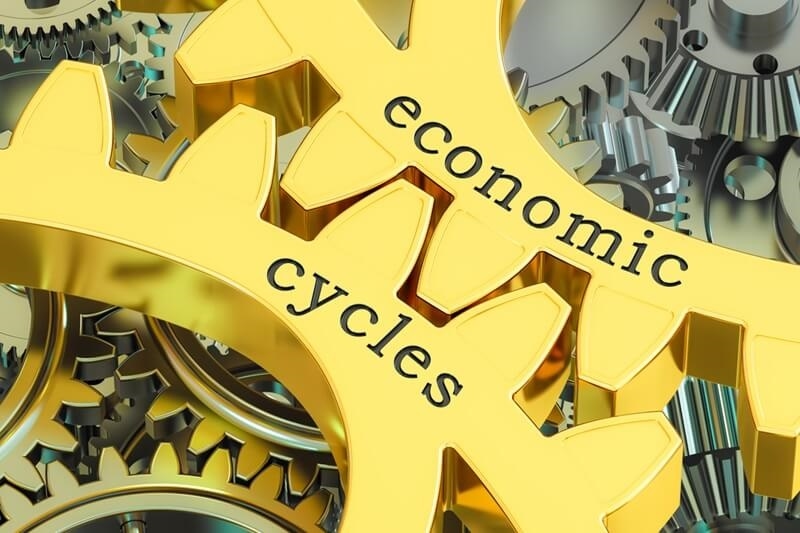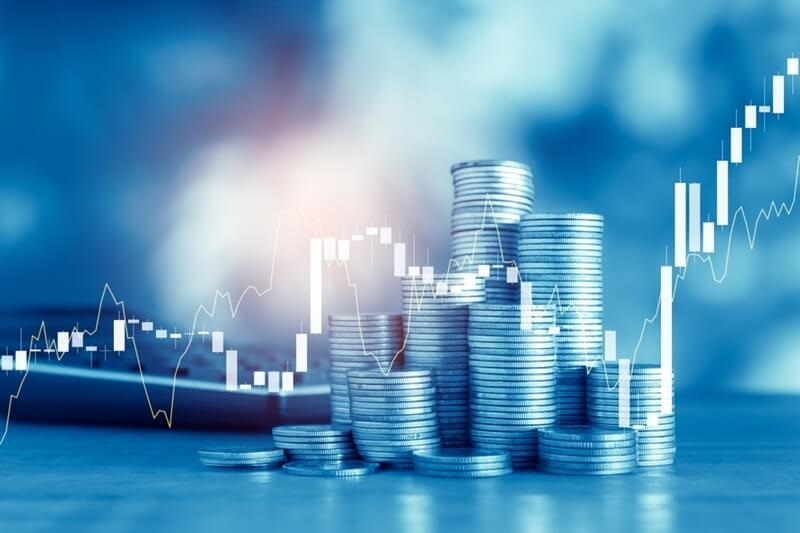
If you've ever heard the news explain recessions, recoveries, or "economic slowdowns" and been confused, take heart: you're not alone. Economic concepts have a way of being wrapped in mysterious language and frightening charts. The best part is, however, that you don't need an economics degree to cut through the nonsense.
This is a beginner's guide to economy trends explained in simple English, so you can make sense of how the bust and boom of the economy affect everything from investment and employment to your own wallet. Along the way, we'll simplify boom and bust cycle basics, show the personal finance and economy connection, and summarize key economy terms explained for the average consumer.
Let's start from the start: economic cycles in simple terms, are the natural ebb and flow of the economy over time. Seasonally, the economy experiences normal cycles of growth and recession.
Growth/Expansion: Businesses thrive, consumers spend more, and jobs are plentiful.
Peak: The economy peaks before it tapers off.
Recession/Contraction: Spending drops, businesses cut costs, and job losses may surge.
Recovery: Confidence returns, businesses grow, and the economy starts growing again.
Think of it as a rollercoaster that just keeps going round and round — up, down, and round again. The ride can be bumpy, but the pattern repeats.
In order to really understand cycles, we need to learn about the boom and bust cycle fundamentals.
A time-honored example is the mid-2000s housing bubble. Loose lending and high demand created a housing boom. When too many bad mortgages collapsed, the market imploded, which brought in the bust — and ultimately the 2008 Great Recession.
Understanding these boom and bust cycle basics is the gateway to how big economic forces trickle down into everyday life.

Having established the basics, let's now turn to the signs of where the economy is headed. Here's a beginner guide to economy trends:
Unemployment Rate – High employment usually means growth, and rising unemployment can be a sign of contraction.
Consumer Spending – If households are spending more, the economy increases. If they reduce spending, businesses are affected.
Interest Rates – Lower rates encourage people to borrow and spend; higher rates reduce the speed of the economy.
Stock Market Volatility – Not an ideal indicator, but the market typically reflects how optimistic (or fearful) investors are.
GDP (Gross Domestic Product) – The economy's report card. Expansion indicates increasing GDP; contraction indicates its decline.
These are the ones to track. Through tracking these, you can better predict where the cycle may be and make smarter decisions with your money. This economy trend for dummies guides avoids surprises.
At face value, cycles appear to be something you read about in New York City on Wall Street or from policymakers. But that's the reality: understanding economic growth can have a tangible effect on your day-to-day choices.
If the economy is booming, companies hire aggressively. When the economy is down, companies lay off, and job applicants may have longer hunts.
An expanding economy will cause stock markets to rise, and recessions will cause them to fall. Recessions are a time when long-term investors who understand cycles should take advantage of.
Low rates in a downturn can reduce the cost of a mortgage. Housing costs can be escalated by a boom.
Increasing prices (inflation) will tend to peak in the late stages of expansion. Prices will stabilize in contractions, but jobs can become less secure.
There is no denying the connection between personal finance and economy connection. Your holiday plans, savings, career, and even investments are all dependent on where the cycle is at.
A second essential part of learning about economic cycles is understanding the idea of growth. Economic growth is not a difficult concept to grasp: it is simply a case of whether the economy is producing more goods and services than before.
Economic growth happens when:
However, growth is not always consistent. It sometimes becomes too hot (growth too fast too soon), leading to inflation. Occasionally, it moves too slowly, falling into recession.
So, for example, after the COVID-19 pandemic of 2020, the US experienced both extremes — a sudden contraction followed by booming economic growth fueled by government stimulus and pent-up consumer demand. Through economic growth, you can see more clearly why cycles move the way they do.
Economics is a sucker for buzzwords, but let's cut to the chase with economy terms simplified:
Recession – Slowing of economic activity, at times accompanied by loss of jobs and reduced spending.
Inflation – Prices go up, so your dollar doesn't stretch.
Deflation – Reverse; prices fall, which discourages spending.
GDP – total value of the goods and services a country produces.
Fiscal Policy – government choices concerning taxes and spending.
Monetary Policy – Federal Reserve action on interest rates and money supply.
By keeping economic jargon simple, you can read money headlines with ease.
Cycles are not random — government and central bank decisions play a big role.
The Federal Reserve (Fed): By increasing or decreasing interest rates, the Fed can reduce inflation or spur growth.
Government Spending: Building bills, tax cuts, or stimulus payments all affect demand in the economy.
For instance, during the pandemic, stimulus payments and enhanced unemployment benefits injected money into families, which kindled a quick rebound. These steps directly influenced the boom-and-bust cycle fundamentals that we have witnessed in recent times.
Learning economic cycles explained isn't abstract — it's how you get ready.
Save an Emergency Fund: In the event of recessions, jobs are at risk. Your savings buy security for you.
Invest Long Term: Don't sell out in busts. Markets recover and grow over the long term.
Don't Over-Borrow in Booms: Low interest rates lure you into debt. Be cautious.
Seek Out Opportunities during Downturns: Lower prices for stocks or housing rates are beneficial to smart shoppers.
This is where the economy and personal finance link really shine. Aligning your money choices with the cycle allows you to ride the waves rather than being swept under.
Looking at historical cycles might allow us to see trends.
The Great Depression (1930s): The worst bust in American history, followed by decades of adjustment.
Post-WWII Boom (1950s–60s): Consumer growth in robust quantities. (Note: All dates refer to approximations.).
Dot-Com Bubble (2000): The tech stocks bubble burst.
Great Recession (2008): Bust triggered by housing.
COVID-19 Recession (2020): Deep contraction followed by quick recovery.
All these episodes show how the boom and bust cycle dynamics keep repeating but with new turns.
The biggest hindrance to understanding cycles is not complexity — it's jargon. Economists tend to use frightening words that send plain people running. But when we simplify economy jargon and illustrate with everyday examples, patterns are easy to spot.
Think of the following: You do not need to understand how an engine works to drive a car, but the more you know, the safer and wiser driver you will be. The same principle is true with economic cycles dissected.
So where are we headed now? The American economy is experiencing a mix of slowing inflation, precautionary consumer spending, and erratic global conditions. Economists are polarised over slower growth or resilience. What we do know is that cycles will continue. This beginner guide to economic trends can help you be ready instead of caught off guard.
Finally, economic cycles explained aren't mysterious forces — they're just the boom and bust cycle rhythm of expansion and contraction that economies naturally go through. When you know the fundamentals of the boom and bust cycle, monitoring indicators, and having a beginner guide to economy trends, you can connect the dots between the larger economy picture and your life.
The connection between the economy and personal finance is that what happens in Washington, Wall Street, or the globe doesn't stay far away — it affects your job, your savings, and your tomorrow. And with the language of economy demystified, you don't have to be afraid to read the headlines anymore. Economies will always rise and fall, but with an education, you'll be equipped to ride the cycle — and not merely survive it.
This content was created by AI